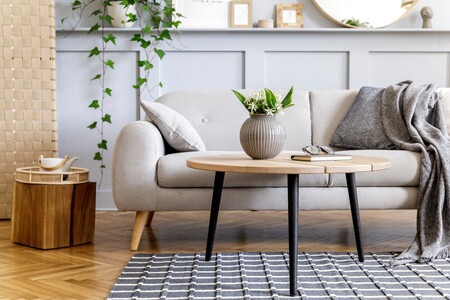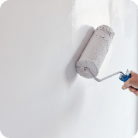21 Surefire Tips to Stage Your House on a Budget & Close the Deal

If putting your house on the market is in the cards, then most likely you have already read quite a bit about how to stage your house on a budget. After all, staging is a popular strategy to sell a home faster and to increase the overall amount prospective buyers are willing to bid and offer. It is well known that staging often has a large impact on a buyer’s interest, and is known as one of the critical things to do before selling your house. Though buyers will still try to bluff as they attempt to purchase your home at a lower price, effective home staging can have them going all in. By following proper staging techniques, you could be cashing a check in no time.
However, it can be challenging to find effective ways to stage your home on a tight budget. Hiring a professional home stager or interior designer will have you folding quickly.
Lucky for you, we already did some of the dirty work and have compiled a list of 21 tips you can follow to stage your home on a budget. Keep reading to reveal several cheap home staging ideas that are sure to keep your chips stacked and get your home moving!
21 Tips to Stage Your House on a Budget
1. Get Free Advice from Your Real Estate Agent
Real estate agents are a great source of information for anything related to home buying or home selling—home staging included. Think about it, this might be your first time staging a home, but chances are your Real estate agent has staged several if not hundreds more.
Asking your Real estate agent how to stage a house is a great way to gain valuable knowledge for seemingly free. In addition, a Real estate agent who has scouted your home and potential buyer pool will have a better idea as to what staging decisions will appeal best to prospective buyers in your area.
Ace Up Your Sleeve: Compare Real estate agents in your area before settling on a particular agent. Confused about how to choose the best Real estate agent? Follow these tips from Forbes.
2. Clean and Declutter Your Home
Just by cleaning and decluttering your home, you are already making great strides to present your home in a more inviting and attractive manner. When beginning to stage your home, you should at the very least consider completing routine tasks such as vacuuming, dusting and scrubbing. For a complete deep clean, you should continue the cleaning spree by clearing out gutters, shining faucet heads, and removing limescale buildup from your bathrooms. Throughout this cleaning process, you may find additional tasks you deem necessary to complete.
3. Clear Flat Surfaces
Clearing the flat surfaces in your home is a great way to decrease clutter and make rooms appear larger. Pay extra attention to shelves, countertops, tables and desks where items are prone to accumulation. It’s okay to have a few decorations on a surface but make sure to keep those decorations simple and tidy. Vases of flowers, nondescript lamps, and candles are a few good ideas.
Ace Up Your Sleeve: Consider the rule of three when arranging decorations on a surface.
4. Remove Personal Items
Often the golden rule of home staging, removing personal items is necessary to allow buyers to see themselves in your space. Prospective buyers may not possess a similar familial makeup as you. If you leave pictures of yourself and your family up around the home, it may be hard for buyers to envision themselves living in the same home.
5. Choose Neutral Colors
Most home staging techniques are geared toward making a home appeal to the widest number of potential buyers. If your home has a wall or two that is painted a bright and dramatic color, it is probably a good idea to update these walls with a neutral color that will appeal to more buyers. Relatively inexpensive, neutral paint jobs are often sighted as the home staging option with the highest return on investment.

6. Let in Natural Light
Most buyers will find natural light important. Therefore, it is in your best interest to maximize the amount of natural light your home receives. A good course of action is to remove any decorative upholsteries or heavy draperies from your windows. Look to replace these items with sheer curtains that will allow in the maximum amount of light.
If you find that your house is lacking in natural light, you can … (keep reading).
7. Replace Lightbulbs Throughout Your Home
Replacing lightbulbs throughout your home is a good trick to achieve various results. At times, especially if your home is lacking natural light, it might be a good idea to purchase bulbs with a higher color temperature (white–blue or more bluish in tone). However, if you are looking to put the final touches on a reading nook or office, it might be best to consider lightbulbs with a lower color temperature (yellowish). Surprisingly to some, the color and temperature of light can have a great effect on mood, productivity and temperament. Check out this article from Immersive Spaces to read more about which lightbulbs you should put where and why!
Ace Up Your Sleeve: Replace all the lightbulbs in your home with bulbs of the same temperature. This will give your home a unified look. If you do install one or two lower temperature bulbs to put the final touches on a reading nook or office use these as accent bulbs and not the main source of light in a room.
8. Organize Closets
Closet space is also a key indicator of the amount of storage a home offers, and you can be sure buyers will be paying special attention to this aspect of your home. So, organizing your home's closets is an effective way to increase the attractiveness of your home and stage on a budget.
Most likely, within a few moments, you can transform even your messiest closet. Consider keeping the floor clear, making sure clothes are hung neatly, and removing about half of the items you normally store within the space. These tips will create more space and provide a better impression of how the space can be utilized.
9. Create an Open House Flyer
When you and your Real estate agent are approaching an open house, it might be a good idea to create an open house flyer. This flyer can include important information about your home and acreage, but should also include the area’s walk score, crime rating, and school profile.
Obviously, you don’t want to highlight any information that paints your home in a negative light, but if these ratings are positive, it’s imperative to put them on the flyer. In addition to highlighting more of your home’s appeal, an open house flyer is also an effective staging tip because it gives prospective buyers something to bring along with them to remind them of your home’s potential as they compare it to other homes they are looking at.
Ace Up Your Sleeve: Free online software such as Canva can provide you with all the tools you need to get started creating a professional flyer.
10. Add Mild Scents
The best home staging practices account for more than just a buyer’s sense of sight. Freshen up your home while staging on a budget by using baking soda on soft surfaces. Sprinkle a little bit of the substance across the surface, leave it to work its magic overnight, and then vacuum it up in the morning. This will work to eliminate odors associated with pets and other sources that you may have become nose blind to.
Washing your walls with mild soap and a non-abrasive sponge is a great way to continue freshening your home. After you complete these steps, consider purchasing a diffuser to disburse natural scents such as lavender and eucalyptus.
11. Complete Any Minor Home Repairs
While staging your home on a budget, we won’t advise you to make any major repairs, but we will suggest you finish any minor repairs you already started.
Started replacing doorknobs or cabinet fixtures recently? Consider completing this job to give your home a stylish look.
Recently purchased new window blinds to replace the one’s Fido chewed? Install them while staging to ensure all blinds work properly.
Have another minor repair in mind? If it costs less than your average night of takeout, you should go ahead and make the repair. For a few bucks, you could decrease the amount of time your house sits on the market.
12. Landscape Your Flower Beds
The power of curb appeal is underestimated. Obviously, a buyer might not put an offer down on your home after taking one glance, but it’s not unreasonable to think a buyer could decide a house is not right for them if this first glance turns them off. Allow your home to make a positive first impression by landscaping your front yard and creating a welcoming vibe.
Consider planting flowers and other plants in odd-numbered groups for added style. Fresh mulch is also a great addition. After, cut the grass and your home’s exterior is ready!
13. Create Clear Pathways
Next, consider how your home is arranged. How does each room flow into the next? Does your furniture arrangement allow individuals to easily navigate from one room to the next?
If not, consider changing the way your rooms are arranged to create clear pathways. These pathways will give your home a modern and accessible feel. If you find creating clear pathways is tough in a particular room or area of your home, you may need to remove a few pieces of furniture. At the end of the day, clutter is your enemy and clear pathways are your staging friend.
14. Give Spaces a Sense of Purpose
How can a potential buyer use that third bedroom? They may not know if you don’t show them. Each room in your home should have a sense of purpose. Now, this sense of purpose doesn’t have to be something deep and knowledgeable that reveals the meaning of life. However, your living room should suggest “this is where we gather,” your dining room should suggest “this is where we eat together” and so on for additional rooms in your home.
A great way to establish a sense of purpose is to stage the room in a way that suggests a certain activity is about to unfold. For example, setting the dining room table can give off the impression that the room could transform into a wholesome scene at a moment’s notice.
15. Use Mirrors to 'Create' Space
Mirrors can be used in a variety of ways to create the impression of more space. Consider grouping a series of mirrors together, using them to reflect light, or utilizing them to create fake windows. If you are trying to make a small room seem bigger during your staging spree, make sure to check out these other 6 Easy Tricks of the Eye!
16. Give Your Bathrooms a Cheap Face-Lift
Updating your bathroom doesn’t have to cost an outrageous amount. Simply find updated faucets and fixtures at your local hardware store or discount chain. Also, consider purchasing cheap shower curtains and liners to give each bathroom a new and fresh appeal.
Ace Up Your Sleeve: TJ Maxx and HomeGoods are great places to look for stylish decorations and home fixtures at a fraction of their original retail price.
17. Take Inventory of Your Home
The best way to save money during staging is to use items and supplies that are already laying around your home. When you begin to stage your home, take inventory of the supplies and items you have and then incorporate these into your staging plan. Once you start staging, you might find out that you need to make a quick run to the store, but at least you will have saved money where you could have.
18. Shop Thrift Stores & Yard Sales
If you do decide you need to make a run to the store after taking inventory of your home, stop into your local thrift store or search out a local yard sale first. At these locations, you might be able to find a variety of home staging supplies. Look for picture frames, cleaning supplies, linens and more all at a fraction of the cost you would spend at a standard department store—perfect for staging on a budget.
19. Take Advantage of Return Policies
If you do have to go the department store route, keep the receipt for picture frames and other decorations that you can return upon selling your home. Most retailers offer a 60-day or longer return policy that you can utilize if you keep your receipt and don’t alter your purchases.
Ace Up Your Sleeve: With a receipt, you can return items to Target and Walmart up to 90 days after purchase.
20. Stage Your Home Virtually
If your home is already empty and you are looking to post pictures on various home-selling platforms, consider virtual staging. This staging option will allow you to create realistic scenes throughout your home that display what it feels like to live in the home. Going the virtual staging route will allow you to skip out on buying or moving furniture simply to sell your home.
Most professional photographers and editors can render virtual furniture into photos easily. These services normally cost anywhere from $25 to $100 per photo depending upon skill, the extent of work, and turnaround time.
21. Make a Game Plan with Your Agent
Our final tip for home staging on a budget is to plan your staging strategy with your real estate agent. Most likely, your real estate agent will have an advanced idea as to what your home’s potential buyer pool will look like. Planning your staging strategy with your agent is an effective way to make sure your home puts off the image and vibe buyers in your area are looking for.
How Store Space Self Storage Can Help!
Need a place to store your furniture or possessions while you clear out your home and complete these staging tips? Consider renting a climate-controlled or drive-up storage unit. We are here to serve you for as long as you need!
FAQs
Q: How do you stage a room on a budget?
A: To stage a room on a budget you should consider following these 10 quick tips.
- Clean thoroughly
- Remove clutter
- Organize possessions
- Clear flat surfaces
- Avoid bright and dramatic colors
- Remove personal items
- Create clear pathways
- Remove excess furniture
- Let in natural light
- Make a game plan with your real estate agent
Q: Who typically pays for staging?
A: Almost always it’s the homeowner who pays for the staging of a home. There are a few situations where the real estate agent might cover a stager’s fee if this is worked into the contract with the homeowner.
Q: How much should I spend on staging?
A: Ultimately, the amount you should spend on staging comes down to a variety of factors including your home’s current state, your budget, and how quickly you need to sell your home. If your home is already in good staging shape and you can afford to leave your home on the market, then you might not need to spend much on staging. However, most homes can benefit from a few staging strategies. Consider staging your home on a budget to make your money work the most for you.
Q: What should you not do when staging a house?
A: When staging a house, a good rule of thumb is to avoid bright and dramatic colors, harsh lighting, and cluttered spaces. In addition, going too far and removing almost all the furniture from a space can also be an unproductive staging choice. Throughout the staging process, you will want to transform your home into a place potential buyers can imagine themselves living, this means appealing to the wide majority of buyers and removing any elements of yourself from the home.
Q: Is staging my home worth it?
A: Yes, staging a home is worth it. The advantages of staging a home are that this curated process can increase your home’s selling price, attract more buyers and present your home in a more revealing and captivating manner. If you are looking to stage your home a budget, start by giving your home a deep clean and removing any clutter. Next, you can use items around your house to create spaces with a sense of purpose and attractive living spaces. Consider consulting your real estate agent to create a synchronized staging plan that effectively highlights the wants and needs of potential buyers in your area.
Wrapping Up: Staging Your Home on a Budget
We hope this ultimate staging guide provided several tips and tricks for staging a house for sale on a budget. Good luck selling your home!






